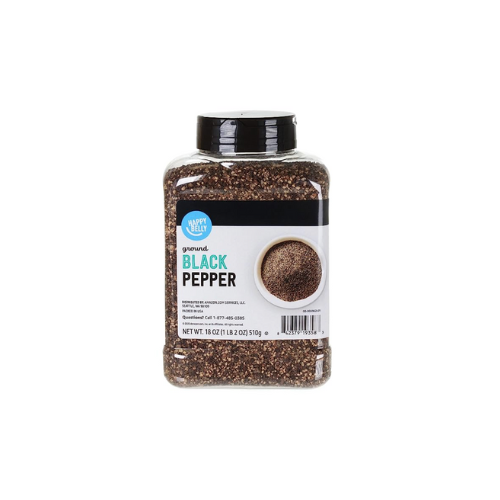Can You Eat Fried Meat on a Carnivore Diet
Health Implications and Tips
The carnivore diet, a regimen primarily focusing on the consumption of animal products, has piqued the interest of many looking for a simplistic approach to eating. Its foundational principle is straightforward: one consumes only meats, seafood, eggs, and select dairy items while abstaining from all plant-based foods. Advocates of this diet argue that it aligns with our ancestral ways of eating, suggesting that a meat-centric diet can support overall health through an intake of nutrients directly sourced from animal products.
When it comes to meal preparation within the carnivore diet, variety in cooking methods is often a question for newcomers. The diet's flexibility is evident in its acceptance of different cooking techniques, including frying. Those adhering to the diet have the freedom to enjoy fried meats as long as the cooking process does not introduce plant-based additives. This ensures that the integrity of the diet remains intact, allowing for the inclusion of fried meat as part of their meal plan, albeit with careful consideration of the cooking medium used.
It is essential for individuals on the carnivore diet to prioritize high-quality, fatty cuts of meat like beef, pork, and organ meats that are dense in nutrients. Moreover, incorporating seafood adds variety and provides different profiles of essential fatty acids and micronutrients. Despite the restrictive nature of the diet, it presents ample opportunity to enjoy a range of flavors and textures, with fried meat being a viable option for many, provided that it's prepared in compliance with the diet's core principles.
Fundamentals of the Carnivore Diet
The carnivore diet is a regimented eating plan centered around the consumption of animal products. It excludes all plant-based foods, categorically focusing on meat as the cornerstone of nutritional intake. Individuals adhering to this diet obtain the majority of their caloric intake from protein and fat, particularly saturated fat.
Essential Nutrients:
Protein: Serves as the building blocks for muscles and tissues.
Fat: Provides sustained energy and helps in absorbing fat-soluble vitamins.
Core Principles:
Animal Products Only: All meals are composed exclusively of animal products, including beef, pork, chicken, seafood, eggs, and certain dairy items.
High-Quality Fats: The emphasis is on consuming meats rich in nutrient-dense fats, particularly choices with a higher fat content, to maintain energy levels and satiety.
Nutritional Profile:
Fats: Should predominantly come from the animal products themselves, including both saturated and unsaturated fats.
Protein: Adequate levels of protein are crucial for the maintenance of muscle mass and overall health, typically sourced from muscle meats and organs.
This diet posits that animal products provide all the necessary nutrients required for human health, omitting the need for plant-sourced foods. Advocates suggest that such an approach can simplify eating habits and ensure a consistent intake of essential nutrients that are bioavailable and easily absorbed by the body.
Types of Meat on the Carnivore Diet
The carnivore diet predominantly includes a variety of animal proteins. Below, key animal protein sources suitable for the carnivore diet are highlighted, emphasizing their role in providing essential nutrients.
Beef
Beef is a staple in the carnivore diet as it provides high-quality protein and essential nutrients. Ribeye steaks are particularly popular for their rich marbling and flavor. Other cuts of beef like sirloin, tenderloin, and ground beef are also embraced.
Pork
Pork offers another source of high-quality protein on the carnivore diet. Fatty cuts, such as pork belly, provide both the needed protein and fat content, while pork chops and ham are equally favored choices.
Poultry
Chicken is a common poultry choice, valued for its versatility and protein content. When consuming poultry on the carnivore diet, one may also include other birds such as turkey, duck, and quail for variety.
Fish and Seafood
Fish and other seafood items, such as salmon, tuna, and mackerel, are excellent on the carnivore diet due to their high omega-3 fatty acid content. Scallops and other shellfish are also popular choices, providing additional beneficial nutrients.
Organ Meats
Organ meats, including liver, heart, and kidney, are highly nutritious and encouraged on the carnivore diet. They are packed with vitamins and minerals, making them an integral part of this dietary lifestyle. Liver from animals like beef, chicken, and bison is especially nutrient-dense.
Preparation Methods for Fried Meat
When adhering to a carnivore diet, fried meat can be prepared using several methods that accentuate flavor and texture. The selection of technique largely depends on personal preference and the type of meat used.
Searing
Searing involves cooking the surface of meat at a high temperature until a browned crust forms. One typically heats a pan to a high temperature, lays the meat in the pan without crowding, and cooks it until the surface is well-browned. This method is excellent for steaks and chops, creating a flavorful crust that seals in juices.
Grilling
Grilling is a dry heat cooking method that imparts a distinctive charred flavor. Meat is cooked on a grill grate over a hot fire or coals. Various cuts, especially thicker ones, are well-suited for grilling. This technique not only provides appealing grill marks but also a desirable smoky flavor.
Roasting
Roasting involves cooking meat uncovered in an oven. This method is effective for larger cuts that require longer cooking times. Meat is generally seasoned and placed in a preheated oven, where the dry, surrounding heat cooks it evenly, creating a delectable outer crust.
Pan-Frying
Pan-frying is a method where meat is cooked in a moderate amount of fat over medium-high heat. It's a versatile technique suitable for thinner meat cuts like cutlets or poultry pieces. The goal is to cook the meat quickly, browning the outside while keeping the inside juicy. Pan-frying is straightforward and ideal for quick, carnivore-friendly meals.
Inclusion of Animal Fats and Oils
The carnivore diet, by design, emphasizes a consumption pattern focused on animal products. One aspect of this diet is the use of animal fats and oils in cooking, which includes lard, tallow, and butter. These fats are considered a mainstay for individuals following the diet, as they are derived from animal sources and therefore adhere to the diet's restrictions to avoid plant-based foods.
Animal Fats:
Lard: Derived from pork, lard is a traditional cooking fat that can be used for frying and sautéing.
Tallow: Sourced from beef or mutton, tallow is known for its high smoke point, making it suitable for high-heat cooking methods.
Dairy-Based Fats:
Butter: Although butter is a dairy product, many individuals on the carnivore diet include it due to its animal origin and nutrient profile.
Ghee: A clarified form of butter with lactose and casein removed, ghee is a popular choice for those who might be sensitive to other dairy products.
While the preference leans towards animal fats like tallow and lard for their compatibility with the human digestive system and absence of plant anti-nutrients, some followers of the carnivore diet choose to include ghee and butter for their culinary versatility and flavor.
The inclusion of these fats serves not only to enhance taste but also to increase caloric intake, a necessity given the absence of carbohydrates on a carnivore diet. They provide essential fat-soluble vitamins and a source of energy, ensuring that those practicing this dietary approach receive comprehensive nutritional benefits from their meals.
I highly recommend purchasing lard, tallow, and ghee online for a convenient shopping experience!
Seasoning and Flavoring
When approaching the carnivore diet, individuals often wonder about the inclusion of seasonings and flavorings. The primary rule is straightforward – if it comes from an animal, it's allowed; anything plant-based is typically excluded. However, seasoning meat can improve its palatability, leading to a more enjoyable eating experience. Below are the common seasonings considered acceptable on a carnivore diet.
Salt: Unrefined salt, such as sea salt or Himalayan pink salt, is not only permissible but encouraged for its electrolyte content.
Pepper: Pure, ground black pepper is often used sparingly by those who tolerate it well, although strict adherents exclude it as a plant derivative.
Herbs and Spices: The carnivore diet traditionally eliminates plant-based items; however, some individuals may include herbs and spices in minimal amounts for flavor variety without facing adverse effects.
Animal-Based Seasonings: Homemade bone broths, rendered fats, and egg yolks can be used to enhance the flavor of meats without adding plant-based ingredients.
Allowed Seasonings on a Carnivore Diet
Salt
Notes: Opt for unrefined versions
Animal fats
Notes: Use for cooking and flavoring
Homemade bone broth
Notes: Adds depth to dishes
In terms of preparation, frying meat is a common cooking method among carnivore dieters. They often opt for animal fats like lard or tallow over vegetable oils for frying to stay within the diet's guidelines. One should pay close attention to the purity of any seasonings and avoid any with additives, sugars, or fillers, which can negate the benefits of the carnivore diet. Those who choose to incorporate seasonings should do so cautiously and observe their body's response.
If you're looking for salt and pepper, buying it online is your best bet!
Avoiding Carbohydrates and Plant-Based Foods
When following a carnivore diet, one actively avoids all plant-based foods which are sources of carbohydrates. This exclusion pertains to grains, vegetables, fruits, and nuts and seeds, adhering strictly to animal-sourced nutrition.
Grains
Grains, a staple in many diets, are completely eliminated on the carnivore diet. They are rich in carbohydrates and therefore not consumed. Individuals on this diet abstain from bread, pasta, rice, and all other grain-based products for their high carb content.
Vegetables
Although vegetables are commonly considered essential for their fiber and micronutrient content, they are not part of a carnivore's food choices. One omits all kinds of vegetables, be they leafy greens or starchy tubers, as they are considered unnecessary for this lifestyle.
Fruits
Fruits are another food group entirely avoided in a carnivore diet due to their sugar and fructose content. Despite being a natural and whole food source of vitamins and fiber, those adhering to a carnivore regimen do not include fruits in their meals.
Nuts and Seeds
Lastly, nuts and seeds, praised for their healthy fats and protein, are also disregarded in the carnivore diet. They contain carbohydrates and anti-nutrients like phytates, which carnivore diet followers seek to avoid; thus, they stick to animal-based fats and proteins instead.
Dairy Products on the Carnivore Diet
Dairy products on the Carnivore Diet are mostly limited to high-fat options such as butter and certain cheeses. Typically, these are included because of their low-lactose content and high content of animal fats, which are principal in this dietary regimen.
Butter and Cheese
Butter is widely accepted on the Carnivore Diet, with individuals opting for grass-fed versions due to their higher levels of vitamins and omega-3 fatty acids. Butter can be used for cooking or as a topping to enhance the flavor of meats.
Cheese, on the other hand, is somewhat more debated. The diet allows for varieties that are high in fat and low in lactose, such as:
Aged cheeses like Parmesan
Hard cheeses like Cheddar
Soft, creamy cheeses like Brie
Individuals on the Carnivore Diet may include cheese in moderation, being attentive to any digestive issues, as some people may be sensitive to dairy products.
Cream
Heavy cream and sour cream fall into a permissible category on the Carnivore Diet, often used in coffee or recipes to increase fat intake. However, these should also be consumed in moderation due to their higher calorie content. Here is a simple guide:
Heavy cream
Note: Permissible; High in fat, low in lactose
Sour cream
Note: Permissible; Suitable for adding to dishes
It is recommended for individuals to monitor their body's responses to dairy products and adjust their intake accordingly, as tolerance to lactose and dairy fats can vary.
Health Considerations of Eating Fried Meat
When individuals on a carnivore diet include fried meat in their meal plan, it’s imperative to contemplate the health implications. Fried meats can be consumed on a carnivore diet, provided they are prepared without plant-based additives and coated with an animal product, if at all.
Nutrient Retention: Frying meat can affect its nutritional profile. Although the core vitamins and minerals typically remain present, high temperatures may reduce water-soluble vitamins like B and C.
Weight Management: Fried foods generally contain more calories than their non-fried counterparts due to the absorption of fats, potentially complicating weight loss efforts for some individuals.
Energy Levels: A heavy intake of fried meats might lead to feelings of lethargy. However, the high protein content can sustain energy levels and aid in maintaining focus, which is beneficial for those needing steady, long-lasting energy.
Cardiovascular Health: Studies indicate a potential increase in heart problems associated with frequent consumption of fried foods. Those consuming fried meats should be mindful of the type and amount of fat used in cooking to mitigate health risks.
Blood Sugar Control: Those with diabetes or insulin resistance should exercise caution as the body may respond differently to fried meats compared to lean cuts, potentially impacting blood sugar levels.
Balancing these considerations is key. Individuals must be discerning about their cooking methods, the quality of meat chosen, and the overall quantity consumed to align with health goals and dietary requirements.
Sample Carnivore Diet Meal Plan
A carnivore diet meal plan prioritizes simplicity and focuses on animal-based foods. Below is a sample meal plan that illustrates a typical day on a carnivore diet.
Breakfast
Steak and Eggs: A classic carnivore breakfast with a ribeye steak cooked to preference and two to three fried eggs, emphasizing the importance of a protein-rich start to the day.
Lunch
Lamb Chops: Tender lamb chops seasoned with just salt and served alongside a cup of hearty bone broth to ensure hydration and nutrient intake.
Snacks
Jerky: Homemade beef jerky made from sirloin or chuck cuts, sliced and dehydrated with minimal seasoning.
Pork Belly Bites: Small pieces of crispy pork belly that provide a satisfying, fat-rich snack.
Dinner
Seafood Platter: A mix of nutrient-dense seafood like salmon, mackerel, and oysters offering omega-3 fatty acids and essential vitamins.
Brisket: A portion of slow-cooked beef brisket, which is both flavorful and rich in protein.
This meal plan balances a variety of meats including poultry, steak, and seafood, and incorporates organ meats like liver or bone marrow. The inclusion of poultry could be in the form of chicken thighs or turkey, depending on preferences. Pork options might include pork chops or pork shoulder, ensuring a fat and protein balance.
Remember, the carnivore diet focuses on animal products and excludes plant-based foods, hence the meals are devoid of any fruits, vegetables, nuts, seeds, or legumes. Always drink plenty of water and consider incorporating bone broth for additional micronutrients.
Impact on Ketosis and Fat Adaptation
Eating fried meat can be a consistent component of the carnivore diet, and it possesses specific implications for those targeting ketosis and seeking to become fat-adapted. On a carnivore diet, one's primary energy source is derived from dietary fats and proteins, with minimal if any, carbohydrate intake.
Fried meat is rich in proteins and fats, which aligns with the ketogenic dietary framework, typically characterized by high fat, moderate protein, and low carbohydrate intake. The absence of carbohydrates in fried meats supports the metabolic state of ketosis, where the body shifts to burning fats for fuel.
The journey to fat adaptation, a state where the body efficiently utilizes fats as a primary energy source, can be influenced by the consumption of fried meat. The high fat content can help one maintain the state of ketosis necessary for fat adaptation. However, it is important to consider the types of fats used in frying as these can impact overall health.
Macronutrient Balance on a Carnivore Diet
Proteins: Generally high
Fats: Varied based on cooking method and meat choice
Carbohydrates: Negligible to none
When meat is fried using healthy fats such as animal fats, butter, or oils like coconut oil, the process can complement the goal of becoming fat-adapted. Individuals should ideally choose natural, unprocessed fats for frying to support their diet optimally.
It is essential to monitor the body's response as one adapts to a ketogenic or carnivore diet. While fat adaptation does not necessarily equate to constant ketosis, maintaining this metabolic state can be facilitated by consuming fried meat as part of a well-managed low-carb diet.
Myths and Misconceptions
In the context of the carnivore diet, certain dietary components are often the subject of debate. Two of the most common discussion points involve the role of meat and saturated fat, and the elimination of carbohydrates from one's diet.
Meat and Saturated Fat
The consumption of fried meat on a carnivore diet has led to concerns surrounding saturated fat. Saturated fat has been historically labeled as unhealthy due to its supposed association with heart disease. However, studies have shown that the relationship between saturated fat intake and cardiovascular risk is not as straightforward. A carnivore diet typically contains higher levels of saturated fats from meat, but emerging research suggests that when consumed as part of this diet, they do not present the same risks initially believed.
Misconception: Eating meat, especially fried meat, is detrimental to heart health due to high saturated fat content.
Fact: Recent findings indicate that saturated fat within a carnivore diet doesn't necessarily correlate with increased heart disease risk.
Elimination of Carbohydrates
The carnivore diet excludes plant-based foods, and, as a result, is void of carbohydrates. A common misconception is that carbohydrates are essential for energy and that their absence in the diet leads to adverse health effects.
Misconception: The body requires carbohydrates for energy, and their complete elimination is harmful.
Fact: The body can adapt to using fat and protein for energy through processes like gluconeogenesis and ketosis.
People on a carnivore diet report sustained energy levels even without dietary carbohydrates, challenging the perceived indispensability of this macronutrient.
















